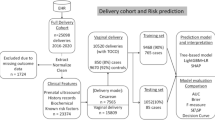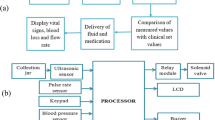Abstract
Postpartum Haemorrhage said to one of the main causes of maternal morbidity in world wide. During Vaginal delivery and C-section unexpected blood loss occurs leads to critical condition in the patient. More likely with a Caesarean birth about 1 to 5% of women have postpartum Haemorrhage. Postpartum Haemorrhage occurs most commonly after the delivery of placenta. The average amount of loss of blood after a single child birth in vaginal delivery is about 500 ml. During the C-section birth it is approximately 1000 ml. Most Postpartum occurs alter after the delivery of the baby. There are two types of PPH one is the Primary PPH which occurs in a day. Secondary PPH occurs after a day or up-to six weeks. The proposed system contains a database about the critical condition that arise during the delivery. It also contains accuracy, sensitivity and specificity comparison that occurs during the PP. Using the Feed Forward Neural Network with Particle Swarm Optimization the classification is optimized and the PPH occurrence is detected.
Access this chapter
Tax calculation will be finalised at checkout
Purchases are for personal use only
Similar content being viewed by others
References
Knight, M., Callaghan, W.M., Berg, C., et al.: Trends in postpartum hemorrhage in high resource countries: a review and recommendations from the International Postpartum Hemorrhage Collaborative Group. BMC Pregnancy Childbirth 9(1), 55 (2009). https://doi.org/10.1186/1471-2393-9-55. [PMC free article] [PubMed]
Roberts, C.L., Ford, J.B., Algert, C.S., Bell, J.C., Simpson, J.M., Morris, J.M.: Trends in adverse maternal outcomes during childbirth: a population-based study of severe maternal morbidity. BMC Pregnancy Childbirth 9(1), 7 (2009). [PMC free article] [PubMed]
American College of Obstetricians and Gynecologists: ACOG practice bulletin: clinical management guidelines for obstetrician-gynecologists number 76, October 2006: postpartum hemorrhage. Obstet. Gynecol. 108, 1039–1047 (2006). [PubMed]
Abouzahr, C.: Global burden of maternal death and disability. Br. Med. Bull. 67(1), 1–11 (2003). [PubMed]
Reyders, F.C., Seuten, L., Tjalma, W., Jacquemyn, Y.: Postpartum haemorrhage practical approach to a life threatening complication. Clin. Exp. Obstet. Gynecol. 33, 81–84 (2006). [PubMed]
Freedman, L.P., Waldman, R.J., de Pinho, H., Wirth, M.E.: Who’s got the power? Transforming health systems for women and children. In: UN Millenium Project Task Force Child Health Maternal Health, pp. 77–95 (2005)
Weisbrod, A.B., Sheppard, F.R., Chernofsky, M.R., Blankenship, C.L., Gage, F., Wind, G., Elster, E.A., Liston, W.A.: Emergent management of postpartum hemorrhage for the general and acute care surgeon. World J. Emerg. Surg. 4, 43 (2009). https://doi.org/10.1186/1749-7922-4-43. [PMC free article] [PubMed] [Cross Ref]
Sheikh, L., Najmi, N., Khalid, U., Saleem, T.: Evaluation of compliance and outcomes of a management protocol for massive postpartum hemorrhage at a tertiary care hospital in Pakistan. BMC Pregnancy Childbirth 11(1), 28 (2011). https://doi.org/10.1186/1471-2393-11-28. [PMC free article] [PubMed] [Cross Ref]
Bibi, S., Danish, N., Fawad, A., Jamil, M.: An audit of primary post partum haemorrhage. J. Ayub Med. Coll. Abbottabad 19, 102–106 (2007). [PubMed]
Committee on Practice Bulletins-Obstetrics: Practice bulletin no. 183: postpartum hemorrhage. Obstet. Gynecol. 130, e168–e186 (2017)
Author information
Authors and Affiliations
Corresponding author
Editor information
Editors and Affiliations
Rights and permissions
Copyright information
© 2020 Springer Nature Switzerland AG
About this paper
Cite this paper
Christina Rini, R., Ambeth Kumar, V.D. (2020). Cost Effective Decision Support Product for Finding the Postpartum Haemorrhage. In: Hemanth, D.J., Kumar, V.D.A., Malathi, S., Castillo, O., Patrut, B. (eds) Emerging Trends in Computing and Expert Technology. COMET 2019. Lecture Notes on Data Engineering and Communications Technologies, vol 35. Springer, Cham. https://doi.org/10.1007/978-3-030-32150-5_63
Download citation
DOI: https://doi.org/10.1007/978-3-030-32150-5_63
Published:
Publisher Name: Springer, Cham
Print ISBN: 978-3-030-32149-9
Online ISBN: 978-3-030-32150-5
eBook Packages: Intelligent Technologies and RoboticsIntelligent Technologies and Robotics (R0)




